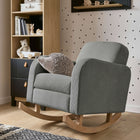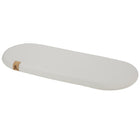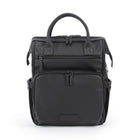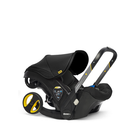Whether you are a first-time mum or are expecting your second child, it is important to refresh your knowledge on safe sleeping practices for babies. Becoming a parent comes with new-found anxieties that you have never experienced before. And sometimes, these worries can overshadow your first few weeks of bonding with your little one. To help you conquer any fears you may have about putting your baby to sleep. We have created this blog post where you can find advice, guidance and the Do’s and Don’ts of safe sleeping.
What is Safe Sleeping Advice?
Safe sleeping advice is introduced to expecting parents to ensure that they are taking the necessary actions to significantly reduce the risk of sudden infant death syndrome (SIDS). Also more well known as cot death. It provides parents with the information they need to put their baby to sleep safely through the day and night.

Where Should my Baby Sleep?
The NHS recommends that for the first 6 months, your baby should sleep in the same room as you. The safest place for your baby to sleep is either in a moses basket, crib or cot. Always make sure that you place your baby on their back to sleep.
Can my Baby Sleep in my Bed?
As advised by the Lullaby Trust, babies should sleep in a clear, safe sleep space, which is easy to create in a cot or moses basket. However, it is a personal choice. Below is some guidance from the Lullaby Trust on how to make your bed a safer place for your baby to sleep.
DO
- Ensure that you keep pillows, sheets, blankets and any other items that could obstruct your baby’s breathing or cause them to overheat away from them.
- Make sure that your baby won’t fall out of bed or get trapped between the mattress and the wall.
- Follow all other safer sleep advice.
DON'T
- Do not let pets or other children in the bed.
- Do not co-sleep if you or your partner smoke.
- Do not co-sleep if you or your partner has drunk alcohol or taken drugs (including medications that may make you drowsy).
- Do not co-sleep if your baby was born premature or at a low weight.
- Never sleep with your baby on a sofa or armchair.
You should never share a bed with your baby if any of the points above apply to you or your partner.
What Type of Blanket Should I use to Cover my Baby?
You should never cover your baby with a bulky quilt, duvet or fluffy blanket. This type of bedding can make it difficult for your baby to breathe and cool down. Lightweight blankets are the best type to use as you can easily adjust the temperature by layering one or more. Remember, a folded blanket counts as 2 blankets.
Your baby’s blanket should not go above their shoulders. To prevent their blanket from moving in the night, tuck it securely under their arms. You should also place them in the ‘feet to foot’ position. It means that their feet are at the end of the moses basket, crib or cot. Instead of a blanket, you may want to use a well-fitting baby sleep bag with the correct tog value.
How do I Know if my Baby is too Warm or Cold?
According to experts, the ideal temperature for your baby’s room is between 16 and 20 degrees. The best way to check if your baby is too warm is by checking the back of their neck to make sure their skin doesn’t feel hot, clammy or sweaty to touch. But remember, if they are unwell, they may feel warmer than usual. In this instance, you would use fewer bedclothes. Another way to check whether the temperature in your baby’s room is comfortable is to get a room thermometer.
What Should my Baby Wear for Bed?
The first thing to take into account when dressing your baby for bed is their room temperature. Knowing the temperature of their nursery will help you make an informed decision on what to dress them in. Remember your baby should never wear a hat to bed as their head is important for maintaining their body temperature. It is how they release heat.
Below is a helpful infographic with guidance on what your baby should wear to bed, depending on what the room temperature is.

Does Breastfeeding Reduce the Risk of SIDS?
Yes. A 2017 study found that breastfeeding for at least two months, even if supplemented with formula, can cut the risk of SIDS in half. Furthermore, the Department of Health recommends that babies are fed only breast milk for at least 6 months.
Unfortunately, breastfeeding isn’t an easy experience for every new mum. But if you’re struggling, you can reach out to the National Breastfeeding Helpline for advice and help on 0300 100 0212.
More Safe Sleeping Practices
- Use a firm and flat mattress that is protected by a waterproof cover, making sure that it is the correct size for your moses basket, crib or cot.
- Don’t use sleep positioners to keep your baby in one position unless advised by a health professional.
- Keep your baby’s sleep space clear of pillows, bumpers, soft toys, pods or nests.
- Keep your home smoke free.
Always Ask if Unsure
When it comes to the safety of your baby, no question is stupid. Your midwife or health professional will be happy to answer any questions you may have. There are also many trusted organisations online, such as the Lullaby Trust or the NHS, that have a great range of resources that cover safe sleep practices.






















































































